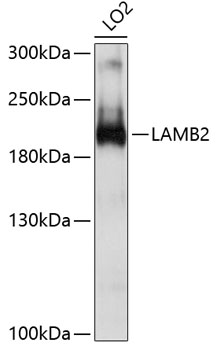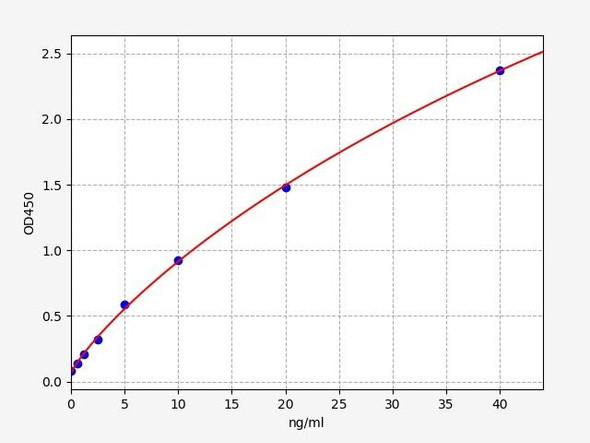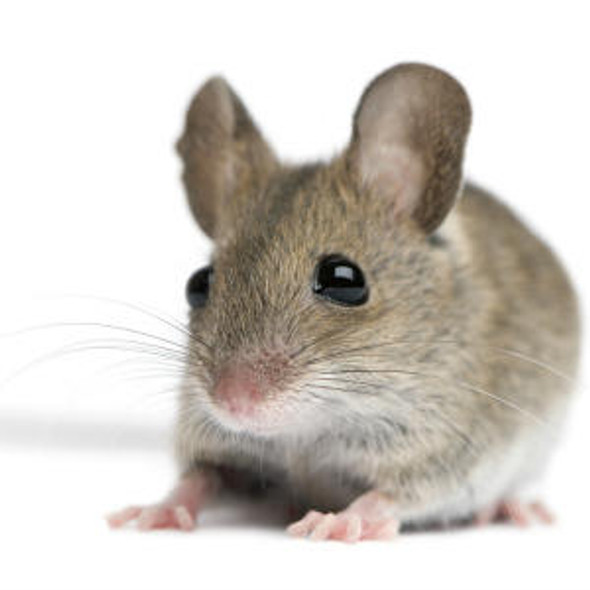LAMB2 Antibody (CAB10565)
- SKU:
- CAB10565
- Product Type:
- Antibody
- Reactivity:
- Human
- Mouse
- Host Species:
- Rabbit
- Isotype:
- IgG
- Antibody Type:
- Polyclonal Antibody
- Research Area:
- Cell Biology
Description
LAMB2 Rabbit Polyclonal Antibody (CAB10565)
The LAMB2 Polyclonal Antibody (CAB10565) is a valuable tool for researchers studying laminin subunit beta-2 (LAMB2), a protein that plays a critical role in maintaining the structural integrity of basement membranes. This antibody, generated in rabbits, is highly specific for human samples and has been validated for use in Western blot applications.LAMB2 is an essential component of the basement membrane, contributing to cell adhesion, migration, and tissue organization. Dysregulation of LAMB2 expression has been linked to various diseases, including kidney disorders, muscular dystrophy, and certain cancers. By targeting LAMB2 with this antibody, researchers can investigate its role in disease pathogenesis and potentially identify new therapeutic targets.
The LAMB2 Polyclonal Antibody is a valuable tool for studying the function of LAMB2 in normal tissue development and disease progression. Its high specificity and sensitivity make it suitable for a wide range of research applications, including immunohistochemistry, flow cytometry, and immunofluorescence assays. Researchers interested in basement membrane biology, extracellular matrix dynamics, and tissue remodeling will find this antibody indispensable for their work.
| Product Name: | LAMB2 Rabbit Polyclonal Antibody |
| SKU: | CAB10565 |
| Size: | 20uL, 100uL |
| Isotype: | IgG |
| Host Species: | Rabbit |
| Reactivity: | Human |
| Immunogen: | Recombinant fusion protein containing a sequence corresponding to amino acids 1579-1798 of human LAMB2 (NP_002283.3). |
| Sequence: | DVRR AEQL LQDA RRAR SWAE DEKQ KAET VQAA LEEA QRAQ GIAQ GAIR GAVA DTRD TEQT LYQV QERM AGAE RALS SAGE RARQ LDAL LEAL KLKR AGNS LAAS TAEE TAGS AQGR AQEA EQLL RGPL GDQY QTVK ALAE RKAQ GVLA AQAR AEQL RDEA RDLL QAAQ DKLQ RLQE LEGT YEEN ERAL ESKA AQLD GLEA RMRS VLQA INLQ VQIY NTCQ |
| Tested Applications: | WB ELISA |
| Recommended Dilution: | WB,1:1000 - 1:2000 |
| Synonyms: | LAMS; NPHS5; PIERS; LAMB2 |
| Positive Sample: | LO2 |
| Conjugate: | Unconjugated |
| Cellular Localization: | Secreted, basement membrane, extracellular matrix, extracellular space. |
| Calculated MW: | 196kDa |
| Observed MW: | 196kDa |
Laminins, a family of extracellular matrix glycoproteins, are the major noncollagenous constituent of basement membranes. They have been implicated in a wide variety of biological processes including cell adhesion, differentiation, migration, signaling, neurite outgrowth and metastasis. Laminins, composed of 3 non identical chains: laminin alpha, beta and gamma (formerly A, B1, and B2, respectively), form a cruciform structure consisting of 3 short arms, each formed by a different chain, and a long arm composed of all 3 chains. Each laminin chain is a multidomain protein encoded by a distinct gene. Several isoforms of each chain have been described. Different alpha, beta and gamma chain isomers combine to give rise to different heterotrimeric laminin isoforms which are designated by Arabic numerals in the order of their discovery, i.e. alpha1beta1gamma1 heterotrimer is laminin 1. The biological functions of the different chains and trimer molecules are largely unknown, but some of the chains have been shown to differ with respect to their tissue distribution, presumably reflecting diverse functions in vivo. This gene encodes the beta chain isoform laminin, beta 2. The beta 2 chain contains the 7 structural domains typical of beta chains of laminin, including the short alpha region. However, unlike beta 1 chain, beta 2 has a more restricted tissue distribution. It is enriched in the basement membrane of muscles at the neuromuscular junctions, kidney glomerulus and vascular smooth muscle. Transgenic mice in which the beta 2 chain gene was inactivated by homologous recombination, showed defects in the maturation of neuromuscular junctions and impairment of glomerular filtration. Alternative splicing involving a non consensus 5' splice site (gc) in the 5' UTR of this gene has been reported. It was suggested that inefficient splicing of this first intron, which does not change the protein sequence, results in a greater abundance of the unspliced form of the transcript than the spliced form. The full-length nature of the spliced transcript is not known.
| Purification Method: | Affinity purification |
| Gene ID: | 3913 |
| Storage Buffer: | Store at -20℃. Avoid freeze / thaw cycles.Buffer: PBS with 0.01% thimerosal,50% glycerol,pH7.3. |







